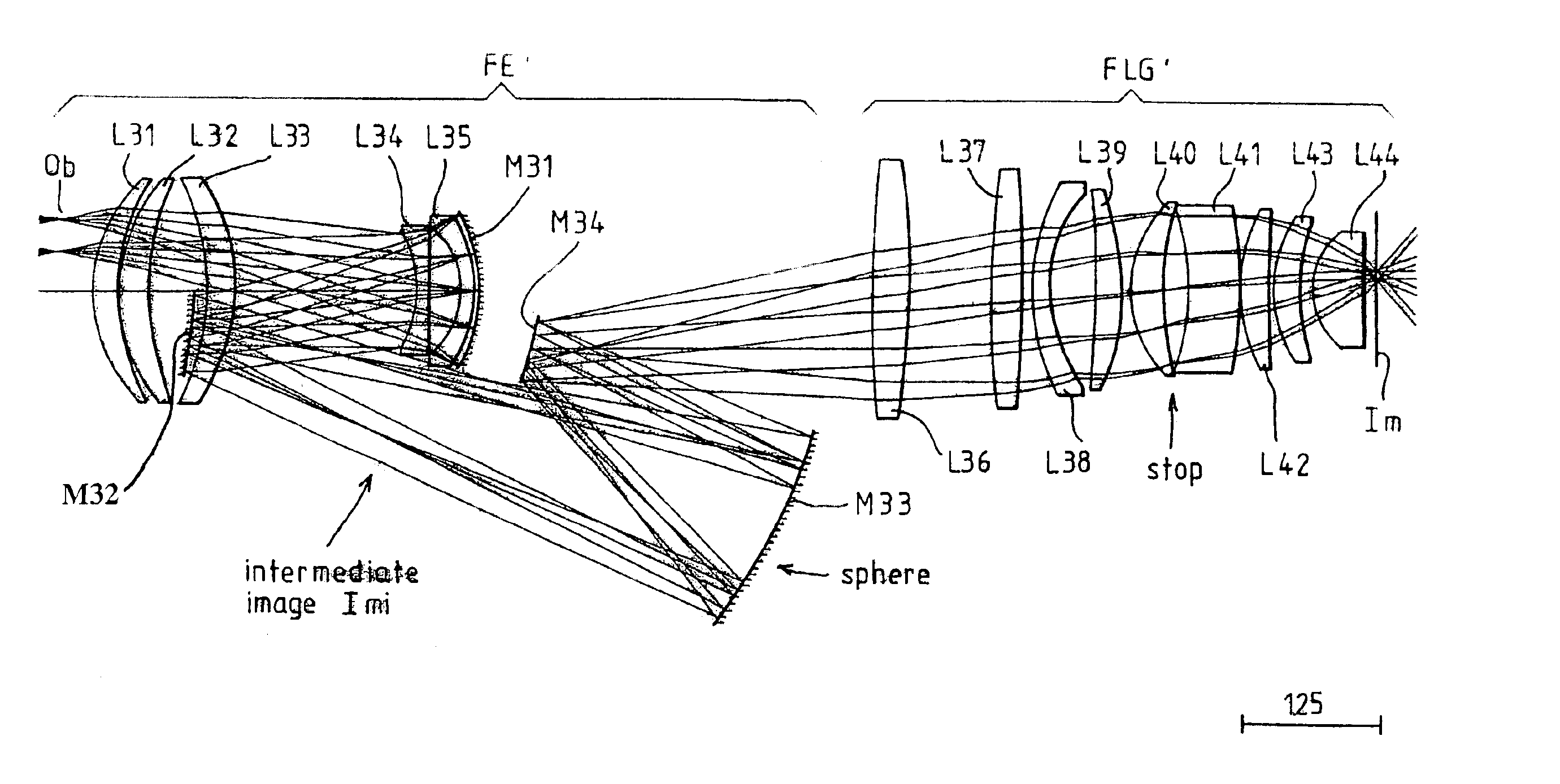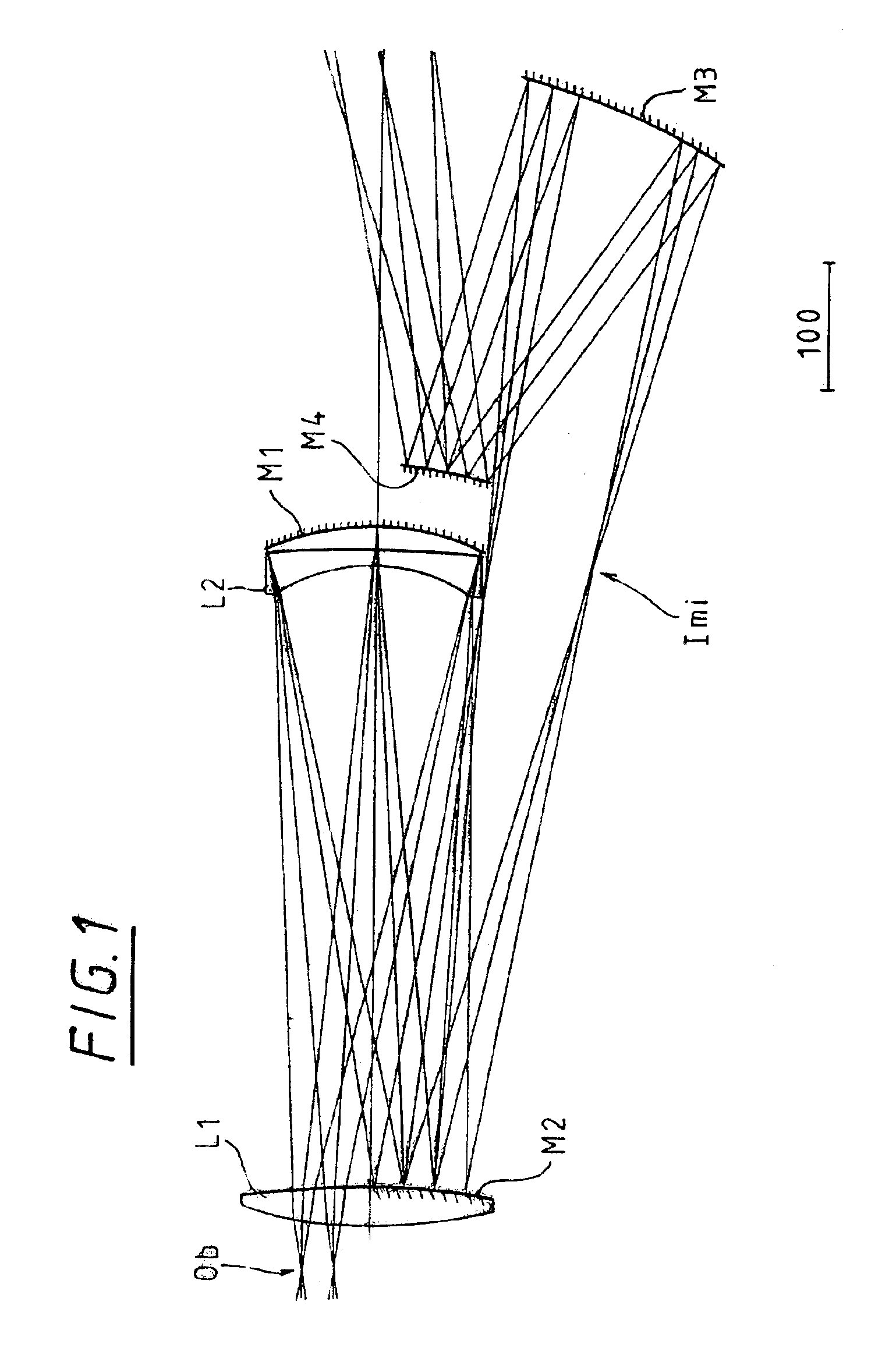Microlithographic reduction projection catadioptric objective
a technology of catadioptric objective and reduction projection, which is applied in the direction of instruments, photomechanical devices, optical elements, etc., can solve the problems of mounting and adjustment face difficulties, and achieve the effect of reducing the complexity of mounting and adjusting, and high imageside numerical apertur
- Summary
- Abstract
- Description
- Claims
- Application Information
AI Technical Summary
Benefits of technology
Problems solved by technology
Method used
Image
Examples
Embodiment Construction
An important concept of the present invention is to replace the front end of an “h-design” objective with a different front end that provides a single axis system.
In the simplest version of this new front end, set up to be part of a −0.25 reduction, 0.75 image side NA system with a 7 mm ×26 mm rectangular image field size, the optical elements are shown in the lens section of FIG. 1. This catadioptric partial system provides a virtual image on the right hand side, which has enough a axial chromatic aberration to compensate for a conventional focusing lens group that forms a 0.75 NA image. A real pupil or aperture plane is formed on the right hand end of the system. The system shown has enough Petzval sum so that the focusing lens group can be made up mostly of positive power lenses.
There is only one field lens L1 in this system, which is close to the object plane (Ob) end of the system. That location is an advantage with respect to lens heating. There are no aspherics in this front ...
PUM
| Property | Measurement | Unit |
|---|---|---|
| size | aaaaa | aaaaa |
| size | aaaaa | aaaaa |
| distance | aaaaa | aaaaa |
Abstract
Description
Claims
Application Information
 Login to View More
Login to View More - R&D
- Intellectual Property
- Life Sciences
- Materials
- Tech Scout
- Unparalleled Data Quality
- Higher Quality Content
- 60% Fewer Hallucinations
Browse by: Latest US Patents, China's latest patents, Technical Efficacy Thesaurus, Application Domain, Technology Topic, Popular Technical Reports.
© 2025 PatSnap. All rights reserved.Legal|Privacy policy|Modern Slavery Act Transparency Statement|Sitemap|About US| Contact US: help@patsnap.com



